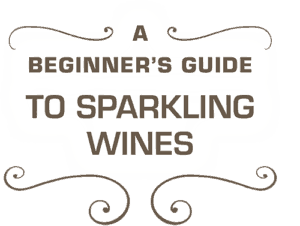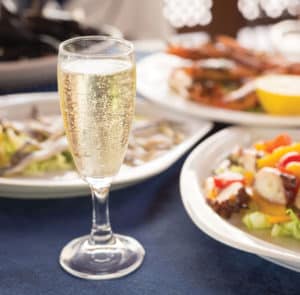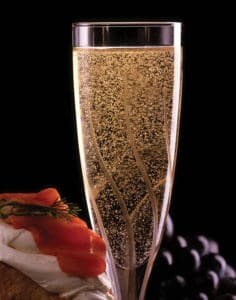
In Spain, it might be called Cava; in Italy, perhaps Prosecco or Asti; in Portugal, Espumante; in France, well, Champagne anyone? But no matterwhere a sparkling wine calls home, there are certain characteristics that hold true regardless of borders, languages, or price points. So, here’s a basic beginner’s guide—something to help with your choosing the next time you’re perusing all those fancy labels.

Unfortunately, while dessert wines speak for themselves, many people are unaware that the dry sparkling wines are not just for toasting and celebrating. They can also be served with food.
For instance, try some Prosecco or a Blanc de noir with your pad Thai. Do you like seafood? How about a Brut rosé or Espumante with shrimp scampi? Maybe even a Cava or a Blanc de blanc with paella.
Oh, and a Brut cuvée? It goes with just about everything. Deep fried chicken fingers appetizer? Check. Cranberry walnut salad? Perfect. Cheese tray? Grilled bratwursts with sauerkraut? Strawberry rhubarb pie? Yes, yes, and yes.
These are just guidelines, of course. But when it comes to sparkling wines, why take anyone’s word for it? There are as many variations as there are individual tastes… or bubbles in a glass. So be adventurous; make your next meal an occasion! Your palate—and your guests— will thank you.
 EXTRA BRUT
EXTRA BRUT
Broadly speaking, this category is for the driest sparkling wine (although hair-splitters may legitimately want Brut Nature, Brut Zero, or Ultra Brut to occupy the top spot). Basically, choose one of these if you want absolutely no sugar whatsoever.
BRUT
Likely the most common sparkler, a brut blend (cuvée) should taste extremely dry with only the barest hint of sweetness on the finish. Also, include the following types of Champagne, as they will typically have brut levels of dryness as well:
❖ Blanc de Blancs: A light, delicate white wine made from all white grapes (e.g., chardonnay).
❖ Blanc de Noirs: Pale in color, these are made mostly (or entirely) from dark grapes and range in hue from golden to a light blush.
❖ Brut Rosé: Yet another product of dark grapes, except the skins were temporarily retained in order to give this wine its pink appearance.
EXTRA DRY
A trifle sweeter than Brut (and a good mixer), this dry wine may also be referred to as Extra-Sec. Counter intuitively, it is considered merely semi-dry.
DRY
Sometimes called Sec, this wine has a more noticeable sweetness.
DEMI-SEC
This variety is quite sweet compared to the drier types and should probably be considered a dessert wine (along with the sweetest sparkler of all, the hard-to-find Doux).

